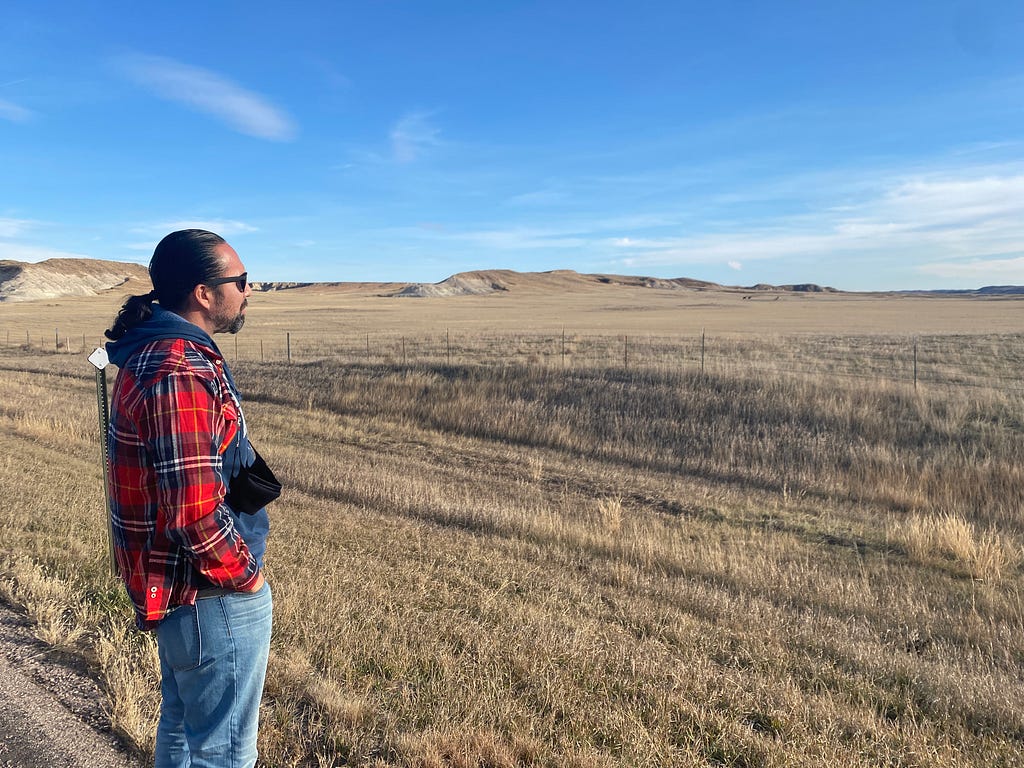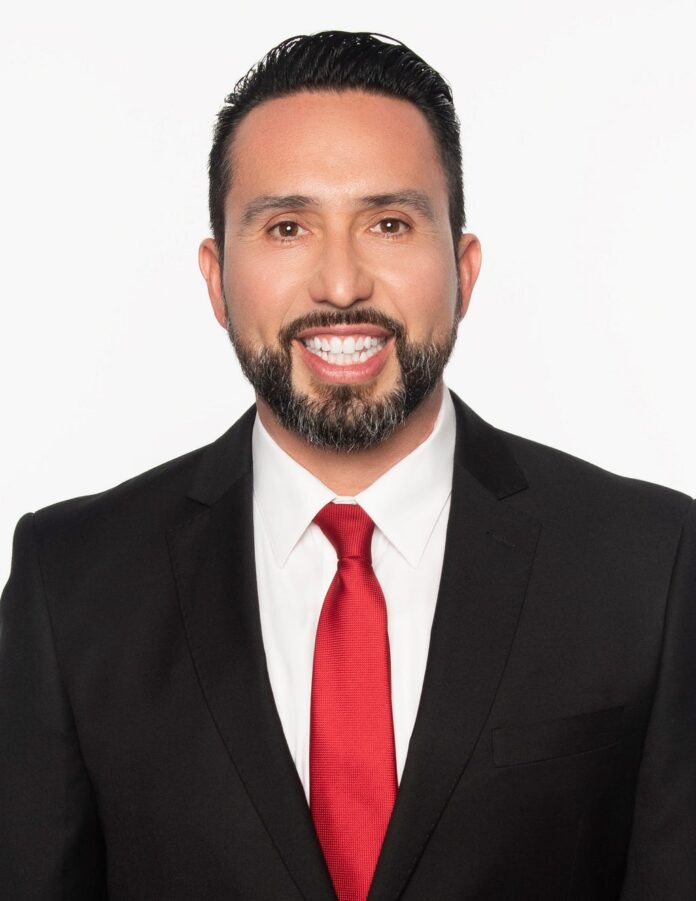Food Deserts: Josh Arce On How They Are Helping To Address The Problem of People Having Limited Access to Healthy & Affordable Food Options
An Interview With Martita Mestey
Awareness is half the battle. Contact PWNA for a workplace presentation on food insecurity in Tribal communities.
In many parts of the United States, there is a crisis caused by people having limited access to healthy & affordable food options. This in turn is creating a host of health and social problems. What exactly is a food desert? What causes a food desert? What are the secondary and tertiary problems that are created by a food desert? How can this problem be solved? Who are the leaders helping to address this crisis?
In this interview series, called “Food Deserts: How We Are Helping To Address The Problem of People Having Limited Access to Healthy & Affordable Food Options” we are talking to business leaders and non-profit leaders who can share the initiatives they are leading to address and solve the problem of food deserts.
As a part of this series, we had the pleasure of interviewing Josh Arce.
Josh is a member of the Prairie Brand Potawatomi Nation who joined Partnership With Native Americans (PWNA) as President and CEO in 2020, after serving on their Board. He has more than 20 years of experience in education management, social work, business development, tribal law and governance. Josh is committed to helping those in need and supporting the advancement of Tribal communities.
Thank you so much for doing this with us! Before we dig in, our readers would like to get to know you a bit more. Can you please tell us what exactly a food desert is? Does it mean there are places in the U.S. where you can’t buy food?
Yes, that’s exactly what it means. In the rural areas that PWNA serves, families have to travel more than 10 miles to access a grocery store. Food insecurity impacts one in four Native families, and more than one-quarter of Native families live in poverty. Not coincidentally, the communities we serve are also located in technology deserts, which compounds other issues. For instance, groceries cannot be ordered online for delivery.
Can you explain a few of the social consequences that arise from food deserts? What are the secondary and tertiary problems that are created by a food desert?
The most significant consequences are the health-related problems for Native Americans associated with food deserts, food scarcity, and food insecurity. These include higher rates of heart disease, diabetes, and obesity, which often extend into the Native youth population. This becomes cyclical for Native families, a multi-generational issue creating a dependence on over-processed or hyper-processed food sources, lack of access to fresh fruits or vegetables, and underperforming brain function in children and adults. Secondary and tertiary problems are part of this cycle too; they play out as a loss of cultural identity, an inability to have a healthy relationship with food, and a lack of traditional foods.
Where did this crisis come from? Can you briefly explain to our readers what brought us to this place?
Food insecurity is the result of Western colonization, centuries of systemic inequalities, and continuous disenfranchisement of Native people. The reservation system imposed by the federal government was one tactic for assimilation that uprooted Tribal communities, disrupted Native foodways, and created dependency on the U.S. government. Through centuries of broken treaty promises, the systematic attack on Native families/children, culture and foodways are consistent with the 10 stages of genocide.
Can you describe to our readers how your work is making an impact to address this crisis? Can you share some of the initiatives you are leading to help correct this issue?
PWNA’s mission is to serve the immediate needs of Tribal communities and support long-term solutions that are community-led and culturally relevant.
PWNA has a variety of initiatives to address food insecurity. For example:
- PWNA’s Train-the-Trainer (T3) service teaches healthy cooking, a return to ancestral foods that predate diabetes, and food as medicine to link food and culture, which increases engagement. Participants also develop the skills needed to train others in their community, while learning these skills from a Native chef.
- PWNA invests in projects like community gardens to reinforce gardening and self-sufficiency in food access.
- PWNA also trains on food preservation and foraging for locally available foods. This also helps prepare the community for emergency response to natural or man-made disasters.
- PWNA has been the sponsor of several food sovereignty summits or conferences that bring together leaders in the Native food space to network, share best practices and honor the success stories of their communities.
Are there other leaders or organizations who have done good work to address food deserts? Can you tell us what they have done? What specifically impresses you about their work? Perhaps we can reach out to them to include them in this series.
PWNA is proud to be working with Feeding America (and Mark Ford, their Director of Native/Tribal Partnerships) through the Natives Prepared Project, assisting pilot sites through our expertise in both food sovereignty and emergency preparedness. The project will help selected Tribal communities improve their access to healthy food, invest in community food banks to support the needs of the Native community, and prepare for any large-scale disruptions such as natural and man-made disasters. Tribal communities know what solutions work best for them, what resources they have, and what will be sustainable. This project will provide them with the resources and training needed to achieve disaster readiness and ensure food access when disaster strikes.
This is particularly impressive because Feeding America is funding the project at every level and is committed to a second pilot upon the completion of this project. Like the ACE’s (Adverse Childhood Experience) model that requires only one person to be a bridge on the path of breaking the cycle of chaos, Feeding America is the one organization that is investing in the communities to help them break their cycle of food chaos and disruption. We need more organizations like Feeding America to make this type of investment.
How can our readers further follow your work online?
To learn more about PWNA and become more NativeAware™, visit:
NativePartnership.org or NativeAware.org and call 800–416–8102.
PWNA can also be found on LinkedIn
or as PWNA4hope on Facebook, Twitter and Instagram.

In your opinion, what should other business and civic leaders do to further address these problems? Can you please share your “5 Things That Need To Be Done To Address The Problem Of People Having Limited Access to Healthy & Affordable Food Options?”
- Awareness is half the battle. Contact PWNA for a workplace presentation on food insecurity in Tribal communities.
- When making giving decisions, remember Native Americans as less than 1% of all charitable giving in the U.S. supports Native causes.
- Donate staple foods in bulk to PWNA or other Native-serving nonprofits.
- Collaborate with charities like PWNA to deliver fresh produce to remote Tribal communities.
- Ask your local representatives to address food and water insecurity on the reservations.
This was very meaningful, thank you so much, and we wish you only continued success.
Food Deserts: Josh Arce On How They Are Helping To Address The Problem of People Having Limited… was originally published in Authority Magazine on Medium, where people are continuing the conversation by highlighting and responding to this story.


